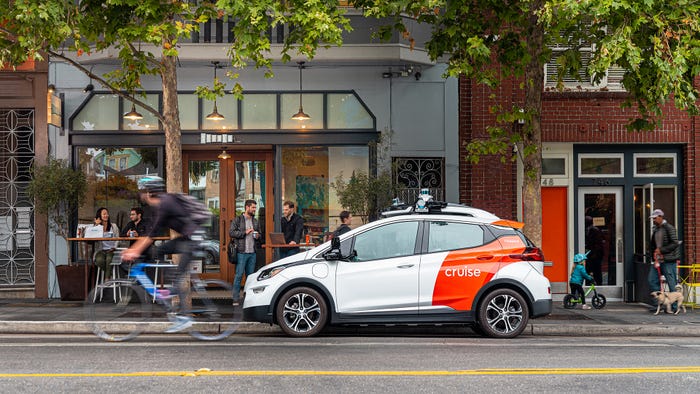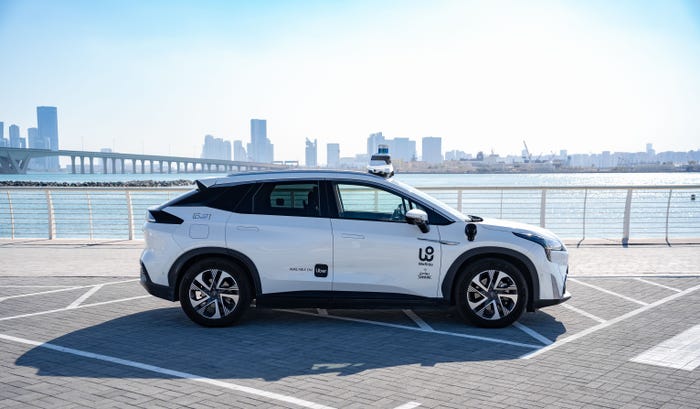Cruise Self-Driving Taxis to See Small-Scale Return
The GM subsidiary’s strategy is to relaunch in one city and prove its performance there, before expanding, once it improves safety and rebuilds trust

Beleaguered self-driving taxi company Cruise aims to relaunch in just one city rather than multiple destinations, it has emerged.
The General Motors subsidiary has suffered a torrid few weeks during which it has paused all its operations across the United States, seen its CEO and founder Kyle Vogt resign and launched an extensive internal review of procedures, as it attempts to deal with the fallout of an incident involving one of its self-driving taxis in San Francisco at the start of October.
Following a slew of negative headlines, many suggesting that Cruise expanded too fast, too soon, it’s now clear that behind the scenes the company is plotting its comeback – and the first details of its master plan are beginning to emerge.
After the contents of an internal email sent to employees were leaked to a number of different outlets, Cruise released a statement which confirmed: “Once we have taken steps to improve our safety culture and rebuild trust, our strategy is to relaunch in one city and prove our performance there, before expanding.”
This is a far cry from Cruise’s policy of a matter of months ago, where news of its intention to target new cities – including Nashville, Tennessee, Miami, Florida and Charlotte, North Carolina – was being announced every week.
Although there is no suggestion yet as to which city Cruise will focus on, it seems unlikely that it will be San Francisco, which has been the company’s core hub to date.
There had been multiple complaints and protests about Cruise’s activities there, and even before Oct. 2, the company had been asked to cut its self-driving fleet in half (to around 100 for night-time operations) by the California Department of Motor Vehicles, following two separate incidents.
What followed next was an alarming accident that saw a pedestrian struck by a hit-and-run human-driven vehicle, propelling her into the path of a Cruise taxi, which then dragged her along the road before coming to a halt, leaving her trapped and seriously injured.
After this, Cruise had its permits to deploy driverless vehicles in California removed, due to an “unreasonable risk to public safety” and was accused of not being fully transparent about the incident.
Taking all this into account, it seems more plausible that Cruise may look to states such as Arizona or Texas – which in regulation terms have generally shown themselves to be more sympathetic toward the development of automated and autonomous vehicles – for a relaunch. It was, of course, already active in Phoenix, Arizona and Austin, Houston and Dallas, Texas.
As well as this scaled-down approach to location, the company will concentrate on its retro-fitted Chevrolet Bolt self-driving taxis rather than pushing the purpose-built Origin AV, which had production suspended earlier in November, with the company in limbo.
“As we work to rebuild trust with regulators and communities, we’ve made the decision to focus on the Bolt-based Cruise AVs in the near term with a longer-term strategy around the Origin,” it confirmed.
Departed CEO Vogt had said in September that the boxy vehicle, which has no steering wheel, was just “just days away from the last regulatory approval.” However, no approval has been forthcoming from the National Highway Traffic Safety Administration, and it is understood that Origin production will not recommence in 2024.
In addition, the Origin was earmarked for rollout in Tokyo as part of a deal with Honda. It is unclear if the timeline for that program will be affected. Similarly, it has not been revealed when Cruise will resume operations in the U.S.
Job cuts, too, are expected, with General Motors reported to be ready to discuss the financial implications of the situation with investors in late November. Cruise has continually been a big drain on GM finances, losing more than $8 billion since 2016.
Like what you've read? For more stories like this on self-driving vehicles and other emerging technologies, sign up for our free daily email newsletter to stay updated!
About the Author
You May Also Like








